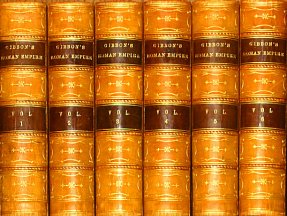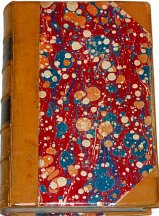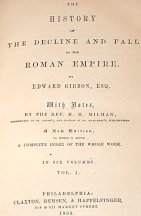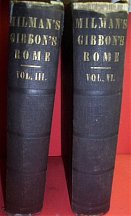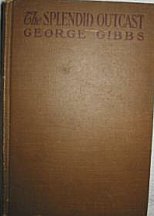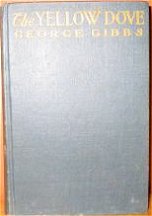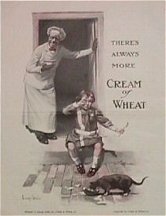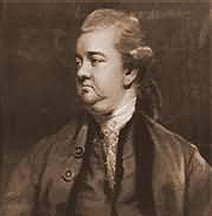 Edward
Gibbon was born in Putney, (now part of London),
in 1737 as the first child of Edward Gibbon, a Member of Parliament, and
his wife. Seven children in all were born into the family and young Edward
Gibbon, although a notably sickly child, was luckier than his siblings
in that he was the only one to survive childhood. Edward
Gibbon was born in Putney, (now part of London),
in 1737 as the first child of Edward Gibbon, a Member of Parliament, and
his wife. Seven children in all were born into the family and young Edward
Gibbon, although a notably sickly child, was luckier than his siblings
in that he was the only one to survive childhood.
Due to his poor health Gibbon had almost no formal
schooling. Following his mother's death in 1747 his father chose to live
a retired life in Hampshire leaving young Edward Gibbon to the care of
an aunt and grandfather in Putney. In this household Gibbon had a
free access to his grandfather's library where, with his aunt's encouragement,
he became an avid reader - an initial "indiscriminate appetite subsided
by degrees in the historic line." His health continued to prevent his being
consistently educated in any formal educational establishment obliging
the family to arrange for private tutoring until, at age 15, his health
suddenly improved and his father was thus able to enter him into Magdalen
College at the University of Oxford.
Given his unconventional early life Gibbon traveled
to Oxford at this time "with a stock of erudition which might have puzzled
a doctor, and a degree of ignorance of which a schoolboy might have been
ashamed." Gibbon came to hate Oxford, he did not like his tutors and they
did not like him - he was afterwards to write of the fourteen months he
spent there as being "the most idle and unprofitable of my whole life."
Whilst at Oxford Gibbon incurred his father's displeasure
in June 1753 by adopting Roman Catholicism, (such conversion also automatically
disbarred him from further attendance at Oxford University!), with the
result that Gibbon was sent to Lausanne where he was to stay in the home
of a Calvinist minister. Gibbon senior intended that, through this
arrangement, his son would come to abjure his recent conversion in faith.
Gibbon spent some five years in Switzerland, becoming thoroughly fluent
in the French language to the extent that it displaced English as the language
in which he thought. His father's intention that Gibbon be reconciled to
Protestantism was fulfilled by Christmas of 1754.
During these years Gibbon studied Greek, Latin,
Logic, and Mathematics; he met Voltaire in 1757 and in that same year fell
in love with Suzanne Curchot, a daughter of a materially poor minister
of religion. His father, however, objected to the match and Gibbon wrote
"Without his consent I was destitute and helpless. I sighed as a lover,
I obeyed as a son." (Suzanne Curchot subsequently married a man named Jacques
Necker who later became a prominent banker and rose to be chief minister
in the French state. A daughter of this marriage was later, as Madame de
Stäel, prominent in European Belles Lettres and politics).
Following this return to England Gibbon was introduced
to a literary circle supported by Lady Hervey and, in 1761, published an
essay entitled Essai sur l'étude de la littérature that he
had begun in Lausanne in 1758. His father had encouraged this publication
hoping that it would bring Gibbon to public notice but it seemed to have
more impact in continental circles than in England - it was not translated
into English until 1764 when it appeared as an "Essay on the Study of Literature."
From 1759 to 1762 Gibbon held a commission in the
Hampshire militia, reaching the rank of colonel. By this time Gibbon had
determined to devote his life to scholarship and writing. He returned to
the continent spending some time in Paris in the circle of d'Alembert and
Diderot, then spent about a year in the Lausanne area before traveling
to Rome in April of 1764.
It was of a day in October of that year that Gibbon
later wrote "as I sat musing amidst the ruins of the Capitol, while barefoot
friars were singing vespers in the Temple of Jupiter, the idea of writing
the decline and fall of the city first started to my mind."
Although the idea for what eventually became Gibbon's
celebrated History of the Decline and Fall of the Roman Empire had thus
occurred to him in October 1764 it was to be several years in gestation.
Gibbon returned to England in June 1765 and between other claims on his
time, including some alternative literary projects, had not progressed
his eventual masterwork much beyond the planning and initial research stages
in 1770 when difficult circumstances associated with his father's death
precipitated further causes of delay.
It was only by late 1772 that Gibbon's project
really seems to have been under way. Gibbon records that after a slow and
hesitant start, that was complicated by a decision having to be made as
to overall tone to be adopted, he proceeded more swiftly and without much
in the way of alteration or correction.
In 1774 Gibbon was invited to join Dr Johnson's
Club where he associated with many of the leading figures of London's literary
scene. Johnson's friend and biographer, Boswell, has descibed Gibbon as
"an ugly, affected, disgusting fellow" that being said Gibbon did have
a reputation for not caring overmuch about cleanliness.
The first volume of Decline and Fall was published
in February 1776 and met with a prompt and considerable acclaim. Sales
were such that this volume actually went into three editions. Some serious
controversy arose from objections to Gibbon's rather cynical and ironical
treatment of the early growth of Christianity in its pages.
Gibbon was himself something of a Deist rather
than a traditional Christian and, from an historian's perspective, believed
that religious dissentions had greatly tended to weaken the Empire. The
following sentiments about the Christian religion's effect on the Roman
Empire appear after something of an eulogisation of Roman statesmen and
Roman ethics in earlier days when it had been, in Christian eyes, a pagan
Empire:-
"The theologian may indulge the pleasing task
of describing Religion as she descended from Heaven, arrayed in her native
purity. A more melancholy duty is imposed on the historian. He must discover
the inevitable mixture of error and corruption which she contracted in
a long residence upon Earth, among a weak and degenerate race of beings."
".. life is the great object of religion,
we may hear without surprise or scandal that the introduction, or least
the abuse, of Christianity had some influence on the decline and fall of
the Roman empire. The clergy successfully preached the doctrines of patience
and pusillanimity; the active virtues of society were discouraged; and
the last remains of military spirit were buried in the cloister. A large
portion of public and private wealth were consecrated to the specious demands
of charity and devotion, and the soldiers' pay was lavished on the useless
multitudes of both sexes who could only plead the merits of abstinence
and chastity. Faith, zeal, curiosity, and more earthly passions of malice
and ambition kindled the flame of theological factions, whose conflicts
were sometimes bloody and always implacable; the attention of the emperors
was diverted from camps to synods; the Roman world was oppressed by a new
species of tyranny, and the persecuted sects became the secret enemies
of the country."
The above passages are open to being contrasted
with a previous, pagan, situation where "The various modes of worship which
prevailed in the Roman world, were all considered by the people, as equally
true; by the philosopher; as equally false; and by the magistrate, as equally
useful." Gibbon suggests that "Toleration produced not only a mutual indulgence,
but even religious concord."
Two further volumes of the Decline and Fall, which
bring to an end the period of the Western Empire (to about AD 480) appeared
in April 1781 and these also sold well. Gibbon summed up the Fall
of the Roman Empire in the west as "the triumph of barbarism and religion!!!"
From 1774 Gibbon was a notably inactive (he did
not speak even once) member of Parliament and also held other official
duties and posts until Gibbon lost a remunerative post at the Board of
Trade in events that were associated with the fall of Lord North's ministry.
Gibbon, having also lost his seat, retired from politics and thereafter
considered that, by sitting in Parliament, he had benefitted from "a school
of civil prudence, the first and most essential virtue of an historian."
In 1783 Gibbon sold up his possessions, with the
exception of his library, and journeyed to take up residence in Lausanne
where he lived in a substantial house with a charming garden and a wonderful
view belonging to his close friend George Deyverdun. It was in this setting
that Gibbon worked upon further volumes of Decline and Fall such that the
last three volumes, treating with the final thousand or so years of the
empire in the East, were completed by late June of 1787. Gibbon wrote
of the day of this completion "I will not dissemble the first emotions
of joy on the recovery of my freedom, and, perhaps, the establishment of
my fame. But my pride was soon humbled, and a sober melancholy was spread
over my mind by the idea that I had taken an everlasting leave of an old
and agreeable companion, and that whatsoever might be the future fate of
my history, the life of the historian must be short and precarious."
For Gibbon it had always been reading and study that :- "supplied
each day, each hour, with a perpetual source of independent and rational
pleasure,"
Although these last three volumes volumes were
not all completed as late as June of 1787, (volume four had been actually
completed in 1784 and volume five in 1786) it was not until later in 1787,
after Gibbon traveled to England with them in manuscript form, that arrangements
were made for their publication. This took place in April 1788
and these last volumes enjoyed a success similar to that enjoyed by the
earlier volumes.
Gibbon returned to Lausanne, where he was greatly
affected in July 1789 by the death of George Deyverdun - it transpired
that Gibbon was a beneficiary of Deyverdun's will to the effect that Gibbon
was enabled to continue to reside in Deyverdun's house in Lausanne.
In 1789 Gibbon wrote his Memoirs of My Life and Writings. He returned to
England in 1793 suffering from several medical complaints and was advised
to undergo a number of operations later that same year - it happened that
Gibbon's health continued to fail with the result that he died in January
1794. Gibbon's Memoirs of My Life and Writings and also his
Miscellaneous Works were published in 1796
|

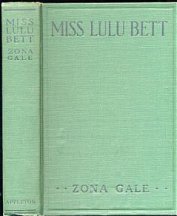
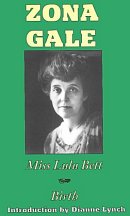
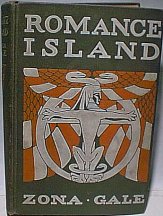
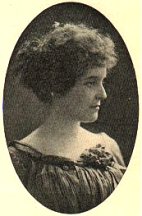 Zona
Gale was born in Portage, Wisconsin and graduated from the University
of Wisconsin in 1895. After moving to New York where she worked as
a reporter, Gale earned her reputation as a fiction writer in the early
1900's. She became recognized during the 1920's as a member of the
"revolt from the village" movement, especially after the publication of
Miss Lulu Bett, a novel dealing with a spinster's response to the drudgery
of small-town life. (See the writer's bibliography below.)
Following the popular reception of the 1920 Miss Lulu Bett,
Gale decided to use it to write a stage play. This won the
Pulitzer Prize for drama in 1921. It is interesting to note that
she wrote two endings for the play. One ending followed the traditions
of the nineteenth century melodrama in which the damsel in distress is
saved by the right actions of the man in her life. The other foreshadows
the twentieth century women's struggle for independence and self reliance.
In 1921, Miss Lulu Bett was adapted by Clara Beranger and produced by Paramount
studio's Famous Players - Lasky as a silent feature film directed by William
C. deMille. Two other Zona Gale works would make their way to the
silver screen, the novel, Faint Perfume in 1925 and her story When Strangers
Meet in 1934.
Zona
Gale was born in Portage, Wisconsin and graduated from the University
of Wisconsin in 1895. After moving to New York where she worked as
a reporter, Gale earned her reputation as a fiction writer in the early
1900's. She became recognized during the 1920's as a member of the
"revolt from the village" movement, especially after the publication of
Miss Lulu Bett, a novel dealing with a spinster's response to the drudgery
of small-town life. (See the writer's bibliography below.)
Following the popular reception of the 1920 Miss Lulu Bett,
Gale decided to use it to write a stage play. This won the
Pulitzer Prize for drama in 1921. It is interesting to note that
she wrote two endings for the play. One ending followed the traditions
of the nineteenth century melodrama in which the damsel in distress is
saved by the right actions of the man in her life. The other foreshadows
the twentieth century women's struggle for independence and self reliance.
In 1921, Miss Lulu Bett was adapted by Clara Beranger and produced by Paramount
studio's Famous Players - Lasky as a silent feature film directed by William
C. deMille. Two other Zona Gale works would make their way to the
silver screen, the novel, Faint Perfume in 1925 and her story When Strangers
Meet in 1934.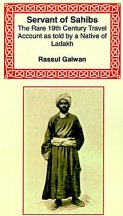 “This
told my mother me. Long years before, in Kashmir hills, were herds of ponies
belonging Maharaja, and were very many people to watch to them, on those
mountain pastures. One these people, after, become a robber. His name Kara
Galwan. Kara was his name (means: black). Galwan means robber. He was a
very strong and clever a robber.”
“This
told my mother me. Long years before, in Kashmir hills, were herds of ponies
belonging Maharaja, and were very many people to watch to them, on those
mountain pastures. One these people, after, become a robber. His name Kara
Galwan. Kara was his name (means: black). Galwan means robber. He was a
very strong and clever a robber.”
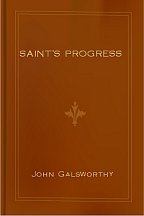
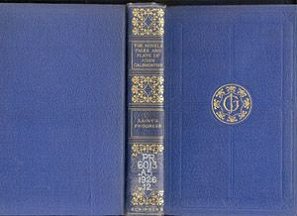

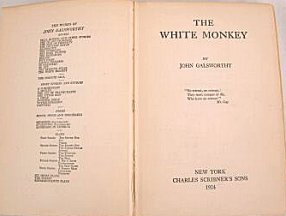

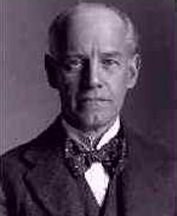

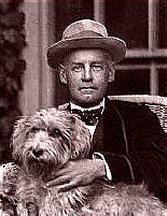

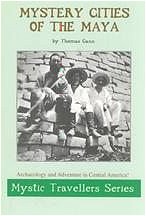

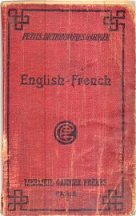 Probably:
A
New Dictionary of the French and English Languages by E. C. Clifton
and Adrien Grimaux ~ Paris: Garnier Brothers of Paris The two volumes contain
1080 pages (French-English) and 1062 pages (English-French) Both
editions include pronunciation notes. The title page also mentions Hachette
and Co. of London, but only Garnier Brothers appears on the spine.
Probably:
A
New Dictionary of the French and English Languages by E. C. Clifton
and Adrien Grimaux ~ Paris: Garnier Brothers of Paris The two volumes contain
1080 pages (French-English) and 1062 pages (English-French) Both
editions include pronunciation notes. The title page also mentions Hachette
and Co. of London, but only Garnier Brothers appears on the spine.
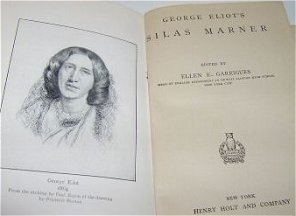
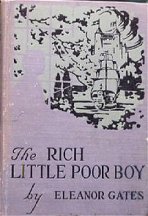
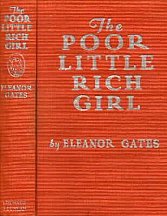
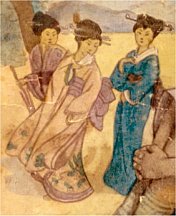 The Live Dolls
books by Josephine Gates, illustrated by Virginia Keep, were a popular
series. None of the "live dolls" (belonging to little girls in a particular
village) was Japanese, but in this book the dolls and their owners
visit Japanese doll-land.
The Live Dolls
books by Josephine Gates, illustrated by Virginia Keep, were a popular
series. None of the "live dolls" (belonging to little girls in a particular
village) was Japanese, but in this book the dolls and their owners
visit Japanese doll-land.
